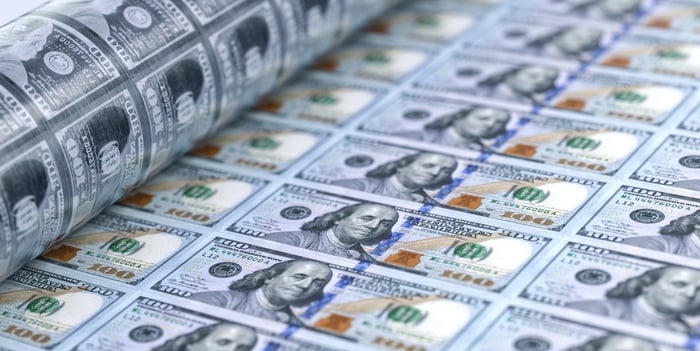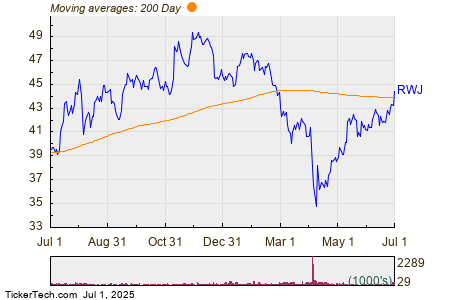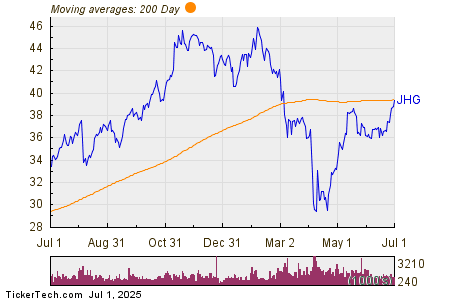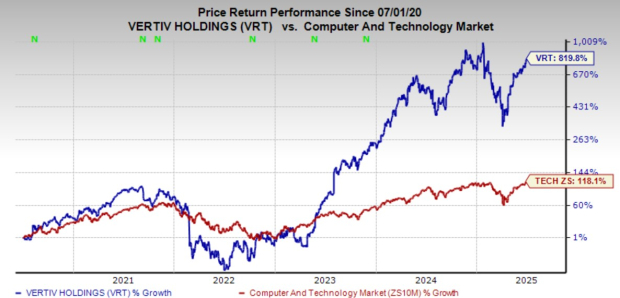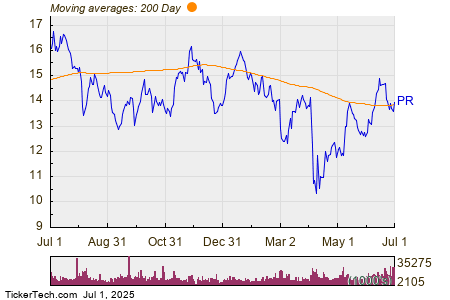Nvidia Stock Hits New High Amid AI Frenzy
Nvidia (NASDAQ: NVDA) stock is climbing to new heights again.
On Thursday, the AI chip pioneer reached an all-time high after a strong third-quarter earnings report from its close partner, Taiwan Semiconductor Manufacturing. Excitement is also building around its new Blackwell platform, which is reportedly sold out for the upcoming year.
Nvidia CEO Jensen Huang recently proclaimed the demand for the new chips as “insane.”
Taiwan Semi played a crucial role in calming worries about a potential AI bubble. CEO C.C. Wei emphasized that his company collaborates with nearly all major AI innovators and stated, “The demand is real, and I believe it’s just the beginning of this demand.” He confidently forecasted, “It will continue for many years.”
Nvidia has emerged as a frontrunner in the AI race, with its stock price surging close to 10x since the start of 2023, shortly after the launch of ChatGPT.
During this climb, Nvidia has added approximately $3 trillion to its market capitalization, making it the second-most valuable company in the world, behind Apple (NASDAQ: AAPL). As of Oct. 18, Nvidia’s market cap reached $3.39 trillion, just behind Apple’s $3.57 trillion, and Microsoft isn’t far behind at $3.11 trillion.

Image source: Getty Images.
Is a $10 Trillion Market Cap Possible?
While it may seem bold to anticipate the first company reaching a $10 trillion market cap, it’s more feasible than one might think. Apple was the first U.S. company to reach a $1 trillion valuation in August 2018, a milestone that at the time felt unreachable. Astonishingly, it took Apple just five years to triple its valuation to $3 trillion.
If Apple could achieve such rapid growth, Nvidia or another competitor may similarly see a tripling in market cap within the next five to ten years, potentially reaching a $10 trillion valuation.
The Competitors in the $10 Trillion Race
In addition to the three companies valued around $3 trillion, five more companies boast market caps of $1 trillion or greater: Alphabet, Amazon, Meta Platforms, Taiwan Semi, and Berkshire Hathaway.
For any of these companies to achieve a $10 trillion valuation, strong growth in revenues and profits will be essential, along with the expansion of their markets.
Berkshire Hathaway, the sole non-tech giant in this group, is less likely to reach this milestone. It primarily operates in mature sectors that grow at rates akin to the overall economy.
While the other businesses exhibit faster growth, those already above $3 trillion stand a greater chance of reaching the $10 trillion mark compared to those valued at $2 trillion or less.
Why Nvidia is Leading the Pack
Among Apple, Microsoft, and Nvidia, the latter is the fastest-growing. Nvidia has achieved five consecutive quarters of triple-digit revenue growth, and although that streak may end in Q3, analysts project continued rapid growth. They expect Nvidia to report 82% revenue growth in the third quarter and 43% in 2025, aiming for a total of $182 billion.
Nvidia appears well-positioned to take advantage of emerging technologies, having already succeeded in sectors like generative AI and cryptocurrency. It is likely to benefit from advances in autonomous vehicles and robotics, owing to its considerable advantage in AI GPUs, essential for powering these technologies.
Investors should recognize that the innovation that leads to the first $10 trillion company might not yet be evident.
Growth prospects for Apple and Microsoft may seem more limited. Apple dominates consumer electronics while Microsoft leads in enterprise software, but both sectors show less potential for explosive growth. Smartphone sales are stabilizing; one phone per person is typically sufficient. Similarly, doubling enterprise software spending in just one year is uncommon.
Can Nvidia Reach $10 Trillion?
Whether Nvidia can escalate to a $10 trillion valuation hinges on its ability to fend off competitors, capitalize on the AI surge, and maintain or enhance its significant profit margins.
Accomplishing this challenge will be difficult, yet achievable within a five to ten-year timeframe.
Apple’s remarkable journey from $1 trillion in 2018 to about $3.5 trillion today serves as a testament that no strict ceiling exists on market valuations. Despite Nvidia’s already impressive increases for investors, additional upside remains.
A $4 trillion market cap seems plausible for Nvidia in the near future, and with time, reaching $10 trillion could be within reach.
Should You Invest $1,000 in Nvidia Now?
Before deciding to buy Nvidia stock, consider this:
The Motley Fool Stock Advisor analyst team recently recommended what they believe are the 10 best stocks to invest in now, and Nvidia did not make the list. The ten selected stocks could yield significant returns in the coming years.
If you had invested $1,000 in Nvidia on April 15, 2005, based on their recommendation, that investment would have grown to $880,670!*
Stock Advisor offers a straightforward plan for investors, including portfolio-building guidance and regular analyst updates, featuring two new stock picks each month. The Stock Advisor service has successfully more than quadrupled the S&P 500’s returns since 2002*.
See the 10 stocks »
*Stock Advisor returns as of October 21, 2024
John Mackey, former CEO of Whole Foods Market, which is now an Amazon subsidiary, is a board member of The Motley Fool. Suzanne Frey, an executive at Alphabet, is also on the board. Randi Zuckerberg, former director of market development for Facebook and sister to CEO Mark Zuckerberg, also serves on the board. Jeremy Bowman holds positions in Amazon and Meta Platforms. The Motley Fool has positions in and recommends Alphabet, Amazon, Apple, Berkshire Hathaway, Meta Platforms, Microsoft, Nvidia, and Taiwan Semiconductor Manufacturing, and positions in options on Microsoft. The Motley Fool maintains a disclosure policy.
The views and opinions expressed herein are those of the author and do not necessarily reflect those of Nasdaq, Inc.


